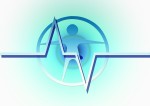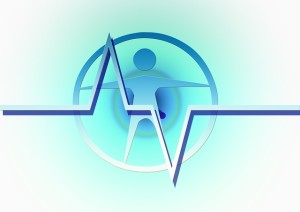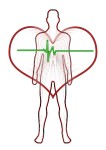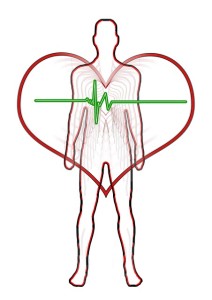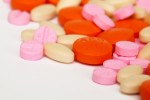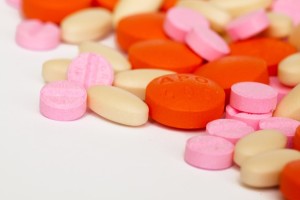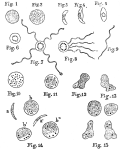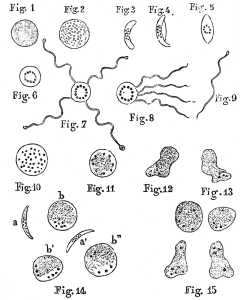In raising healthy children, it’s not enough to just focus on the physical aspect of health. To be truly healthy, a child’s emotional health must be nurtured and strengthened. Developing a mental attitude of wellness is also essential. When we adopt an attitude of wellness, we take on a belief that being well is a natural, normal state. Our goal is to have outstanding, vibrant health, not just to be free of disease. With a wellness attitude, we know that we have control over our own body and how healthy it will be.
We can teach and help our children to grow up with an attitude of wellness. Children have much more control over their own health than you may think. The mind is a very powerful mechanism with miraculous control over health and healing. The more children learn to use the extraordinary powers of their minds, the healthier and happier they will be. They may also live longer than someone who takes a passive approach to health.
Children can learn that negative, unhealthy lifestyles are choices that contribute to sickness. We all know what a struggle it can be to encourage children to eat the foods that we know are essential for health, and to avoid junk food. When our children are very young, we can pretty easily restrict the things we know to be unhealthy for them. However, as they get older, telling them that they cannot have sugar or other problem food is not productive. They will feel deprived and will probably rebel. Anything that is forbidden is tempting.
Children need to know they have a choice—they can either choose good health and wellness or opt for poor health and sickness. They need to be taught the facts so they are able to make educated choices. Talk to them about the effects that food has on their body. They can understand that sugar lowers their immunity, making them more susceptible to sickness, as well as contribute to tooth decay. You can explain to them how eating healthy foods will give them more energy and make them feel better. This can be taught in very simple, fun and creative ways. It may take a while to actually sink in, and at first the lure of scrumptious tasting sugar and white flour “treats” that all the other kids are eating may be too much to refuse, but eventually the time and energy you put into health education will pay off. If children are raised with a respectful attitude of wellness, as they get older they will most likely choose to turn down things that they know are not healthy for them. Respectful is a key word, meaning not nagging or shaming them about food.
As they get even older, they can be taught that smoking cigarettes or taking drugs is their choice to opt for sickness. Telling them to “just say no” and forbidding them to smoke or take drugs is not enough. They need to understand the health consequences and realities of putting these substances in their bodies. Children are very intelligent, but they need to be reminded that they are powerful and they have choices. They can understand the consequences of their choices.
Talk to your children about how strong their bodies are and the extraordinary things their bodies can do. Show them how their bodies can miraculously heal a cut, how their heart works and how they can strengthen their heart through exercise and healthy food, how their immune system fights off germs and other invaders, and how getting enough sleep makes them feel better throughout the day. All these things can be taught in fun and imaginative ways with drawings, stories, etc. Children are fascinated with their bodies and they want to know how they work.
Dr. Wayne Dyer tells us in his book, What Do You Really Want For Your Children?, “the more children learn from you to rid themselves of attitudes which foster sickness, the more you are helping them to enjoy life each day. They will actually live longer and more productive lives if they learn wellness as very young children.” Parents frequently make statements that reinforce a sickness attitude. Did your mother ever tell you that if you don’t wear a scarf, you’ll catch a cold and be sick? A wellness approach would be to say, “You are so strong and healthy that you probably won’t develop a cold, even if the other kids do, but here is a scarf to keep you warm and comfortable outside”. Dr. Dyer also cautions us to resist taking frequent trips to the doctor and using medications for everyday aches and pains and common ailments such as a cold. When we teach children that there is a pill for every complaint and that a doctor visit is part of every cure, we disempower them and set them up to rely too heavily on drugs and doctors throughout their lives. They need to know they are in charge of their own health.
In order to teach our children to choose health, we must model wellness and take charge of our own health. Wellness is not just having an absence of symptoms. It’s asking yourself how you can attain outstanding health. It’s making exercise and stress reduction a daily part of your lifestyle, choosing healthy foods and modeling this behavior for your children. As Dr. Dyer puts it, “It means simply being as healthy as you possibly can be, and being determined not to allow your wonderful body, the place where your mind currently resides, to deteriorate unnecessarily.”
There has been much research on the relationship between illness and attitudes. The research suggests that even cancer and heart disease are strongly related to a person’s inner attitudes. Dr. Harrison tells us in his book, Loving Your Disease, that “Predispositions to disease are often not passed on in a physical sense but rather through the messages parents give their offspring and the living habits and diet they pass down”.
Dr. Dyer recognizes the obvious elements of wellness that include diet, exercise, and eliminating negative lifestyle habits. In addition, he suggests two elements that will help children as much as the physical components. These elements are using visualization and having a sense of humor. They are just as important as diet and exercise.
Positive imagery or visualization is a powerful tool that children can use to help them become capable, healthy and vibrant people. Visualization puts the imagination to work to help achieve a desired outcome. It is the process of creating positive thoughts and images in the mind to communicate with the body. It is one of the strongest and most effective ways to make happen what you want in your life. Children can be taught to regularly see themselves in their minds as being radiantly healthy, vibrant, and actively participating in whatever activities they want to do. Positive imagery or visualization is very helpful for children who are overweight or who have acne or other skin diseases and need to establish a better self-image. Verbal affirmations can be used with imagery. A good affirmation for a child to say regularly is “I am good to my body and my body is good to me” or “Every day I am feeling better and growing more vibrantly healthy”. Children can also use visualization to help their body to heal. Studies show that there are significant remission rates among people healing from cancer who use visualization as part of the healing process.
Laughter is a strong healer and health builder. Dr. Dyer tells us that “when children laugh they are actually releasing into their bloodstream chemicals which are necessary for the prevention and cure of disease”. Have fun with your children. Be a little crazy and silly and laugh as much as you can. Each good belly laugh means that you and your children are becoming more physically and emotionally sound.
Healthy Child Online is a comprehensive resource providing parents and caregivers with free information and safe, natural products to enhance the health and lives of children. Healthy Child Online is a project of Future Generations, started by Jane Sheppard, a work-athome mother, in 1997. The children are our future, and Future Generations is dedicated to protecting and enhancing the health and well-being of children by:
• Providing information about how to promote vibrant health naturally.
• Raising awareness about how the profit-driven food, chemical, and medical, and entertainment industries have spawned some unhealthy foods, drugs, vaccines, pesticides, and other products and practices, and are perpetuating an unsafe environment for children.
• Supporting parents and caregivers in switching to a more natural, respectful, nurturing way of tending to babies and children’s needs and helping children to become happy, loving, emotionally-secure adults. We advocate natural, holistic, heart-centered, attachment parenting.
Article originally posted at ICPA.org.
